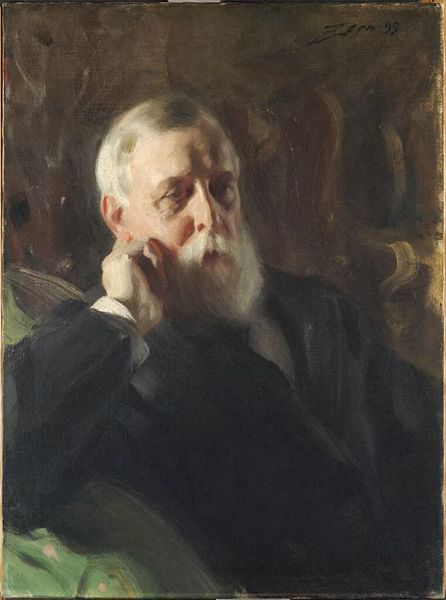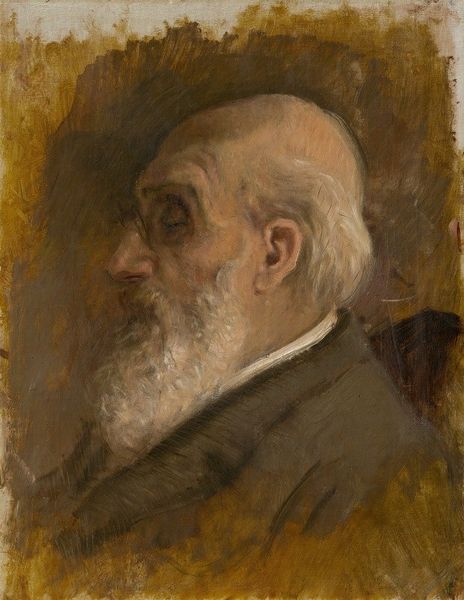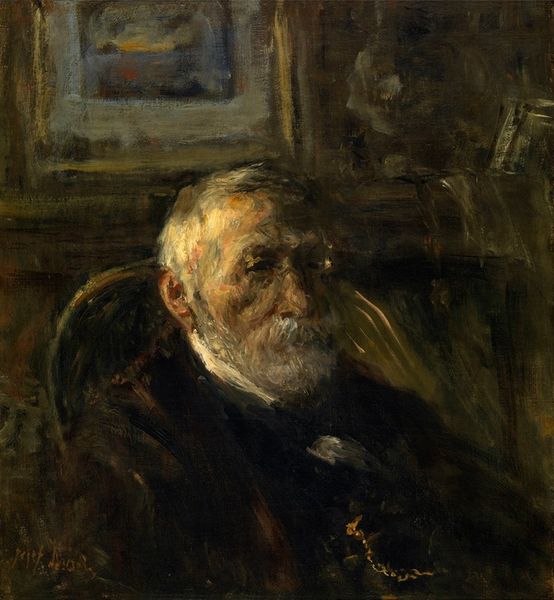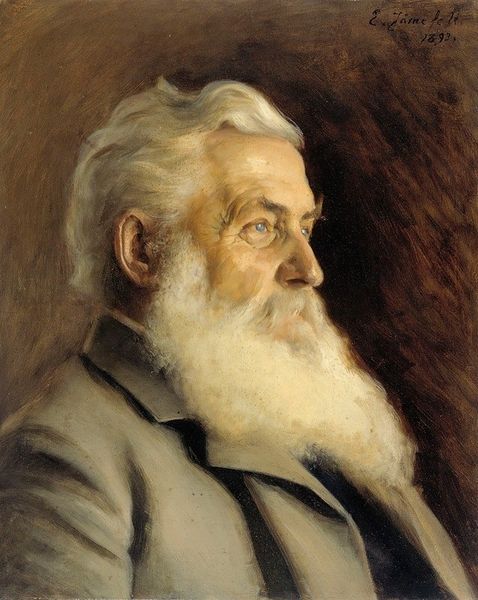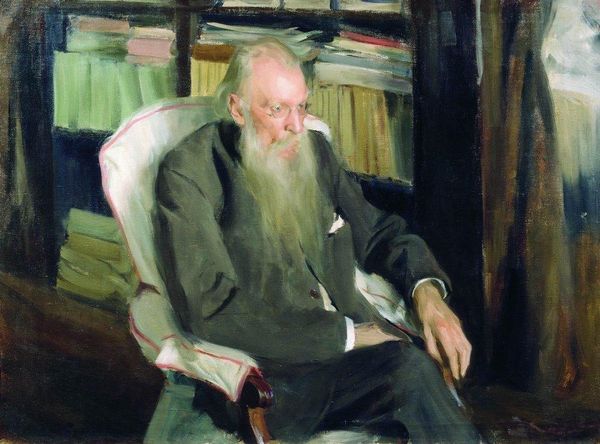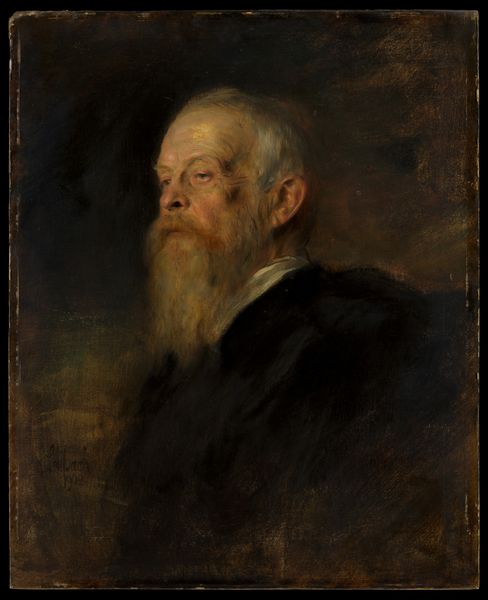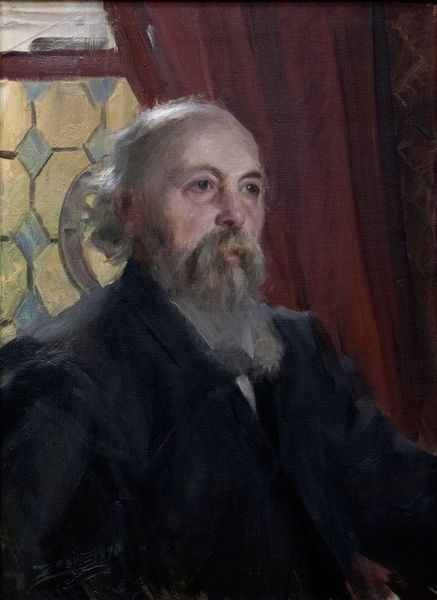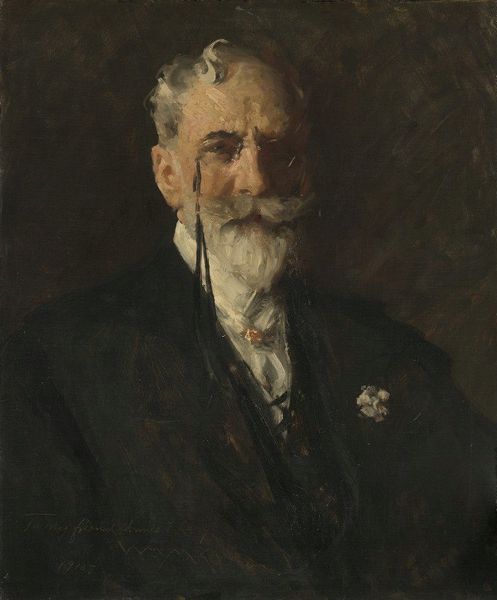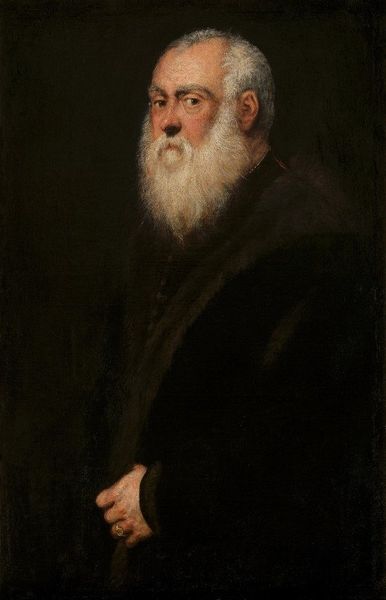
painting, oil-paint
#
portrait
#
painting
#
oil-paint
#
charcoal drawing
#
oil painting
#
portrait drawing
#
realism
Copyright: Dobri Dobrev,Fair Use
Editor: Dobri Dobrev’s "Portrait of Artist Ivan Mrkvička," painted in 1929 using oil paints, has a certain contemplative stillness to it. The way the light catches his beard makes him seem almost ethereal. What symbols or cultural meanings do you think the artist is trying to convey? Curator: It’s fascinating how portraits, like icons, capture something beyond mere likeness. The beard, for instance, isn’t just facial hair; it’s a signifier of wisdom, age, and experience. Think of religious iconography – beards denote prophets, patriarchs, and wise men. Dobrev, I think, wants to link Mrkvička, also an artist, to this tradition of venerated figures. Editor: So, you see a connection between the visual language of religious art and this secular portrait? Curator: Precisely. And consider the eyeglasses. They're not just functional; they symbolize intellectual insight, scholarly dedication, and artistic vision. In a sense, the portrait becomes a visual biography, a collection of symbolic clues that invite us to decode Mrkvička’s essence. Doesn’t the subdued palette, the greys and browns, reinforce this sense of thoughtful introspection? Editor: I hadn't thought about the glasses in that way, but it's so clear now! The subdued colors certainly create that contemplative mood. I was mostly looking at this as just a "portrait". Curator: See how looking for symbolic weight changes the work! It moves beyond simply rendering appearance. Editor: I’ll definitely remember to look beyond the surface and consider the symbolic meaning in other artworks as well. This was illuminating! Curator: And I learned to see the quiet, still contemplation of the sitter in a new light, too!
Comments
No comments
Be the first to comment and join the conversation on the ultimate creative platform.


